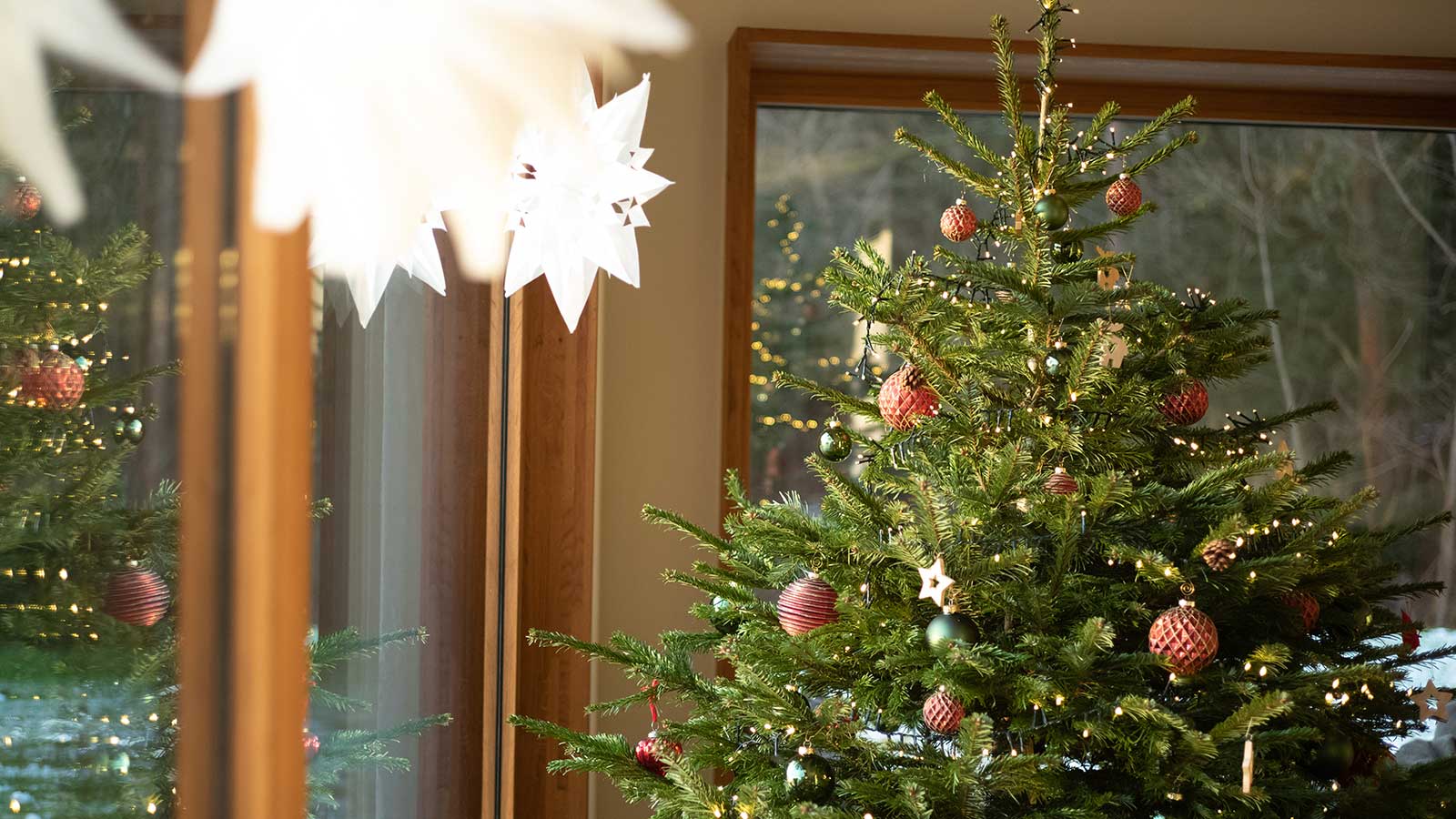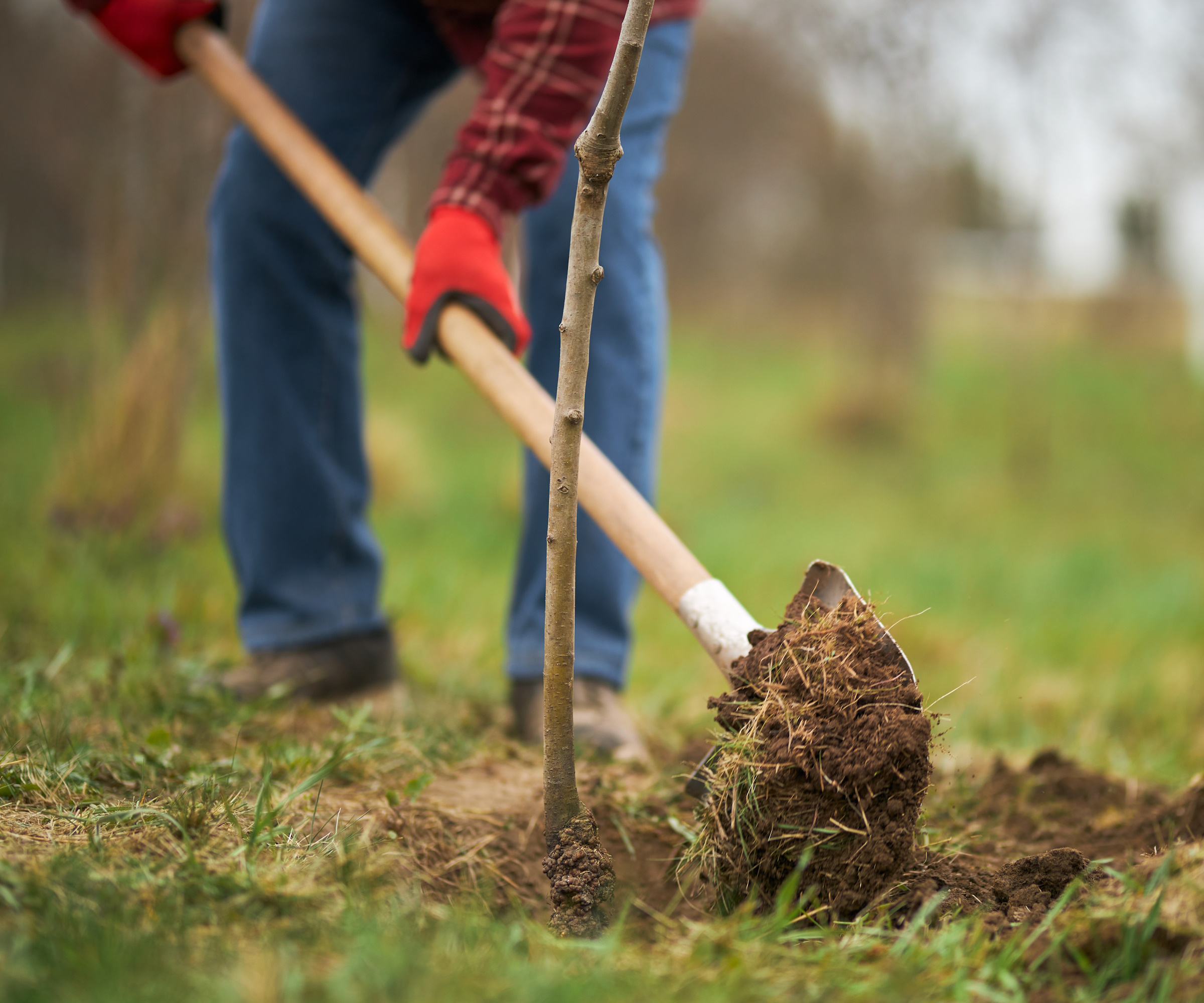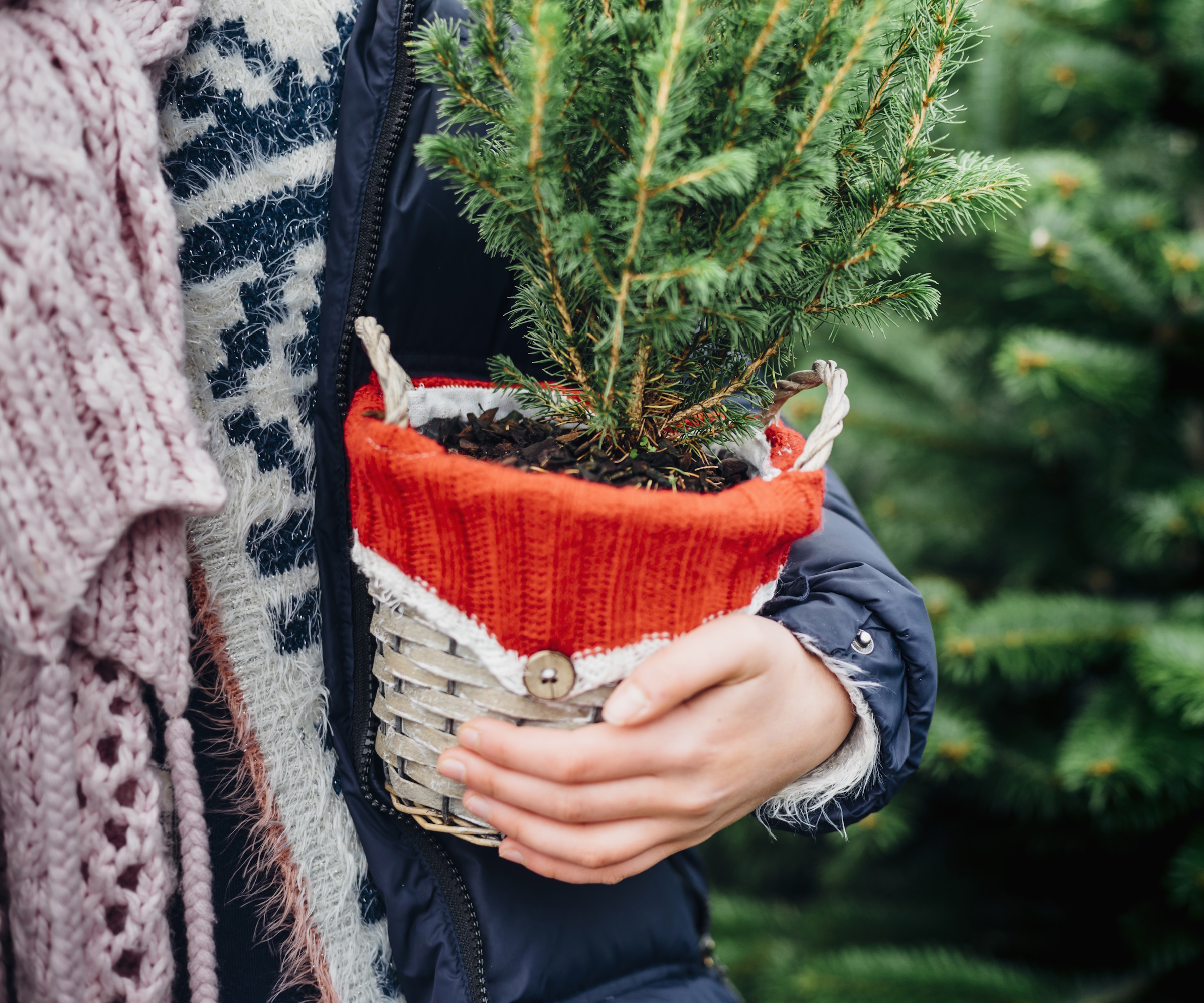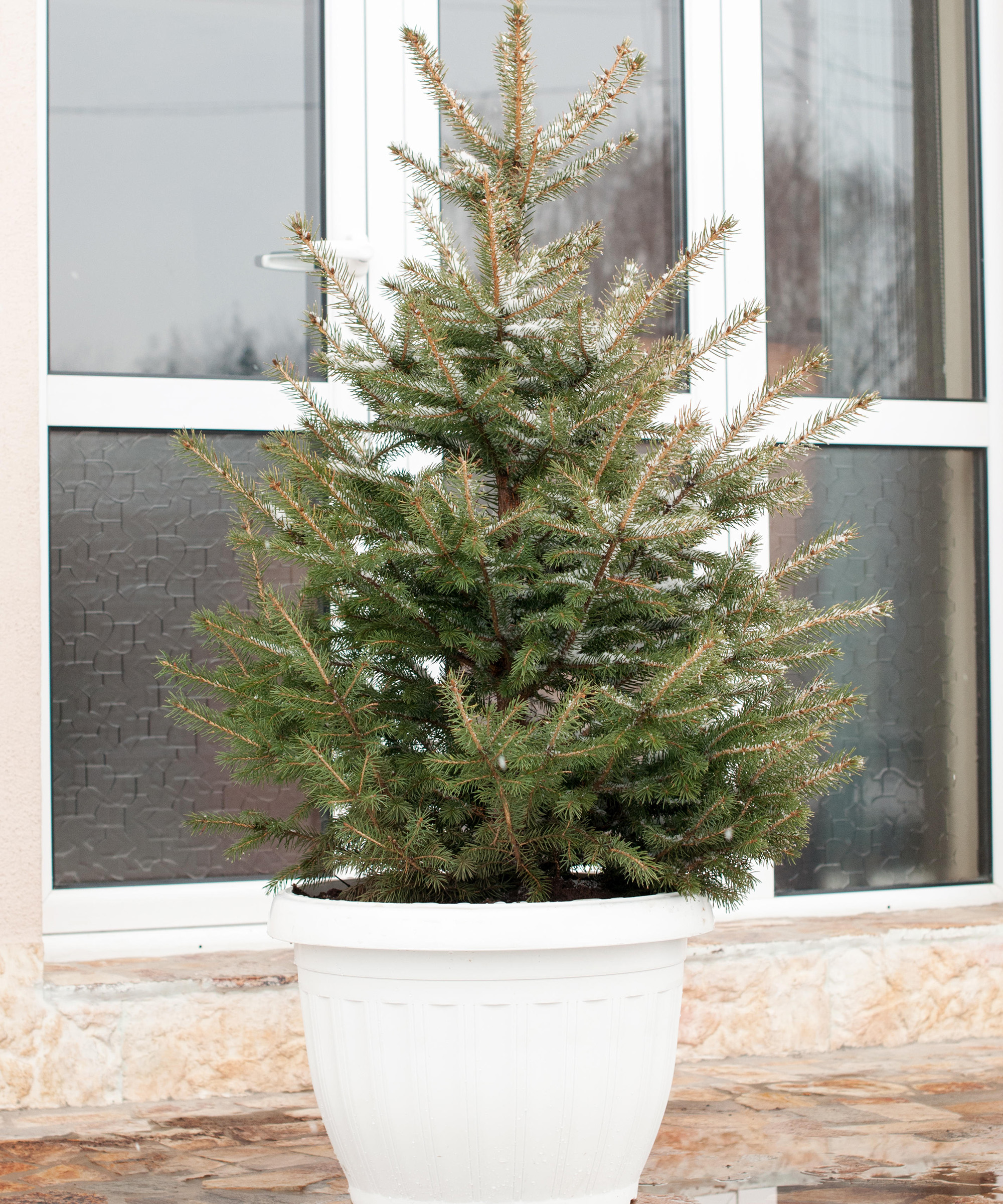
Fresh Christmas trees are beautiful; the joy they bring from their deep green pine needles and gorgeous scent is hugely uplifting. But not all of us are keen on the idea of a freshly cut tree: glorious for a few weeks, but brown and ready for firewood come the new year.
As more of us are thinking about the sustainability side of our Christmas festivities, bringing a smaller, potted Christmas tree variety into our homes - which can be later planted and grown in the backyard - is becoming a popular option.
And provided you know the right way to transfer it from your indoor space to outside, planting your evergreen in the yard after the holidays is a fairly easy task. We've gathered all of the information you are going to need to help you to plant and care for your Christmas tree in its new outdoor home.
1: Pre-dig a hole in your yard for your tree

If it's your intention to plant up your Christmas tree in your yard once it reaches the official date to take down a Christmas tree, the sooner you dig a hole for it the better. As the temperatures continue to drop during winter months the soil is going to get increasingly harder to dig, and it will begin to freeze.
Choose where you wish for your Christmas tree to go and dig a deep hole for it using a durable large shovel, such as the forged round point shovel from Target. This hole will need to be deep enough to cover twice the width and twice the height of an average Christmas tree rootball, which tend to be a minimum diameter of twenty four inches.
It's recommended to choose a space in your yard that isn't too near to a fence or other plants to allow adequate room for your branches to grow.
Karen Musgrave of Hicks Nurseries says, 'Temporarily fill the hole with mulch or cover it with boards for safety. Keep the backfill soil covered with plastic if possible as well to stop it from freezing.'
The plant cover freeze protection blanket from Amazon bundled up into your pre-dug hole should do the trick.
2: Check if your Christmas tree is compatible with your climate
Before going out and planting up your Christmas tree, it's vital to know if you're in the right climate to be growing it long-term. The best way to do this is to check your plant hardiness zone, and research how that lines up with the climate needs of different kinds of Christmas tree.
Michael Lyon, owner of Christmas Trees in the Mail, explains how to check your hardiness zone.
'To grow a Christmas tree in your backyard, it's important to first plug your zip code into the USDA hardiness zone map. This will tell you the planting zone that you're located in. From here, you will then be able to see what kind of Christmas trees grow best in your area.'
Some of the most popular Christmas trees, according to Michael, are balsam fir, fraser fir, douglas fir, noble fir, blue spruce, scotch pine, and red cedar.
3: Acclimatize your indoor tree for outdoor weather

If you bring your indoor Christmas tree outside straight away into cold weather, it's going to receive a shock. To prevent this from happening, it's important to acclimatize your tree and help it get used to colder weather.
Karen recommends bringing your tree somewhere cooler for a short period of time or taking it into your garage to help bridge the gap between your home and yard's temperature. 'I recommend placing your Christmas tree in an unheated garage or a cool protected area for at least one week. Make sure its pot is sitting in a large container or tub filled with water to have access to enough water during this process. It's important to water a Christmas tree sufficiently.'
Any tub that won't leak will work for this process, from the large plastic party tub from Walmart to the Tribello plastic wash basin from Amazon. What matters is that it comfortably fits your tree, and that you monitor its water level consistently.
Don't fill it full and leave your Christmas tree sitting in there as doing that will cause its roots to rot. If you measure the diameter of your tree's trunk, the tree will thrive best if you give it one quart of water per inch of diameter daily.
4: De-pot your Christmas tree
After around a week of acclimatizing, your Christmas tree will be ready to leave its pot for transferring into the yard.
The easiest way to remove your tree from its pot will be a two person job. First, gently lay your tree down on a waterproof tarp such as Guard shield all purpose tarp cover from Amazon. This will protect your flooring from dirt and water.
Next, one person needs to hold the base of the Christmas tree. This will ensure that the trunk will be subjected to as little damage as possible by increasing its stability. The other person will need to use both hands to rotate the Christmas tree's pot while trying to pull the pot towards their body. The rotating motion should help to loosen the pots grip on the tree.
If your pot seems stuck, watering the tree to dampen the soil can help it to unstick.
Once your Christmas tree has come out of the pot, you can remove some of the excess soil from its roots carefully with your hands (the giant clumps) prior to bringing it outside. You're going to be planting it up with new, nutrient-filled soil, so discarding some of old soil will provide your tree's roots with more space to get comfortable in the fresh soil.
5: Plant and mulch your tree outdoors

The most common mistake made when planting a Christmas tree is not allowing its roots enough space in the ground to comfortably exist. So, if the hole you pre-dug isn't deep enough, do all you can safely manage to dig it deeper before planting your tree in the yard.
'Once your Christmas tree's rootballs are in the ground, backfill around the tree with a spoil mixture made up of two parts soil and one part peat moss. Pack the mixture firmly, water well and then mulch,' says Karen.
Placing mulch around the base of your tree is a great way to assist with water retention in the soil below. Especially in its first week or two of being a part of your yard, your Christmas tree is going to need to drink a lot.
You can purchase mulch, such as the SuperMoss coco mulch from Amazon, or if you would rather just gain the benefits of protecting the base of your tree from encroaching weeds, you could invest in a product such as the Trademark innovations mulch ring from Amazon. This mat allows water and nutrients to seep through and encourages them to reach down to your tree's root system below.
If you follow these steps, you're in a great position to keep a Christmas tree alive in your yard.
Keep maintaining good practices of watering your tree and monitoring the conditions of its pine needles, and you'll hopefully have your festive fir with you in the yard for years to come. But if you're struggling with the whole process, there are still many ways to make an artificial Christmas tree look more realistic.







